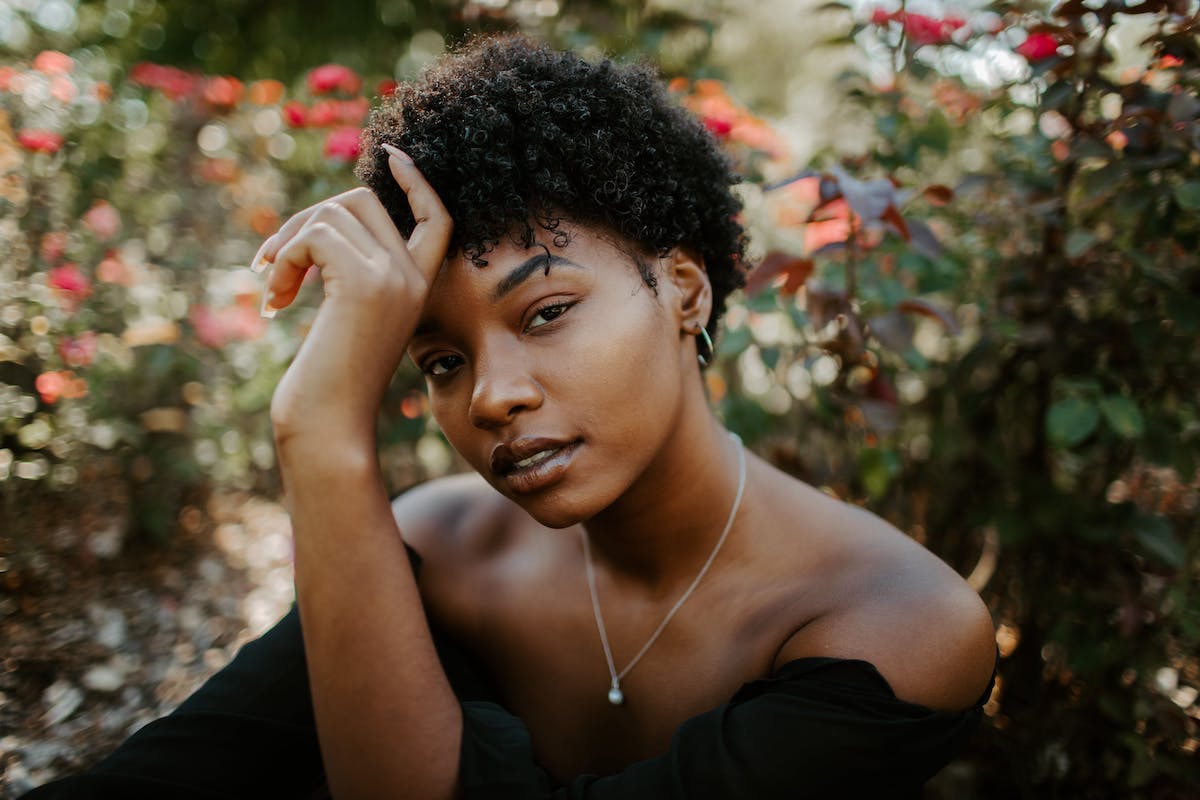Since 2015, the percentage of our Clauderer customers who have decided to stop straightening their hair has risen steadily. For them, having beautiful hair means having healthy hair and not artificially straight hair, as they believed for a long time. Here's the advice we were among the first to give them on how to love and care for their new hair.
Your new hair
Letting your hair grow naturally is much more than a passing fad... It's about loving black beauty and being proud of it. You've chosen to express your true nature and we congratulate you! You can count on the Centre Clauderer to support you every step of the way. Our Afro customers will tell you: we've always encouraged them to stop straightening their hair and given them advice on how to maximise the charm and health of their natural frizzy hair.
First of all, so that you're not tempted to go back on your resolution, here's our first recommendation: get to know the nature of your new shoots and treat them with care. Think of them as precious, living fibres, not as threads that can be pulled taut. After all, every little bend in your natural hair stems represents a potential breaking point and therefore hair loss! Pay particular attention to the curly-straight junction, as this will be the most vulnerable area for as long as you allow the two textures to coexist in transition. However, if you know how to look after your new hair gently, you'll soon understand its needs and won't regret your decision.
And to encourage you in your choice, never forget the martyrdom you imposed on your hair by straightening it.
Your old hair
Brittle and split hairRough hair, hair that doesn't grow properly, hair lossThese are also the hair problems we see every day with relaxed hair. No wonder!
The application of any straightening product begins by draining the hair of its natural moisture, which reduces the effectiveness of the straightening process. And even if the most attentive compensatory care is then applied, the hair cuticle remains weakened, running the risk of cracking on repeated tugging and leaving the hair dull. The result: unresponsive, lifeless hair!
What's more, straightening products, with or without lye, all have a very alkaline pH: they can be corrosive to the scalp and trigger flaking (dandruff), irritation, crusting and itching. Is it any coincidence that you need to wear gloves when applying them?
Not to mention real burns which occur when the product has been inadvertently applied too close to the skin. If the inflammation is deep, it can reach the hair follicles, which will no longer produce hair, leaving as many areas of the head without new growth.
Only natural products
And since you've decided to go back to natural hair, go all the way and only use natural products to maintain them. It would be a shame to damage your new hair! Your hair has a special affinity with plant-based substances: it absorbs them, and they give it strength and softness to the touch.
Take a good look at the labels and exclude all ingredients that could be harmful to their health. In particular:
- alcohol in gels,
- sodium laureth and lauryl sulphates (not to be confused with ammonium lauryl sulphate, which is natural!)
- glycerine, in treatment creams and balms, if its presence exceeds 5% of the total content,
- silicone, which is now used in all products.
The first three reduce the ability of products containing them to moisturise hair properly. As for silicone, it's perhaps the worst of all false friends, as it initially gives the illusion of softer hair that's easier to detangle... But by depositing a thin chemical film on your hair, it traps it and prevents it from being moisturised.
Scalp care
First of all, you should know that opting for a "short or long "transition is a matter of personal choice, but has no effect on the quality of the hair that grows: hair grows from the roots, not from the lengths. So it's up to the source of the roots which must be pulled up if you want to speed up the growth process and cut the relaxed part of your hair more quickly (Cf. Activ'Croissance for frizzy hair).
The skin of your scalp must also be perfectly clean, i.e. free of any redness or film that straightening or other hair products may have generated. To achieve this, it needs to be constantly purified and oxygenated with a milk rich in highly moisturising plant extracts, accompanied by special massages. If you follow our method using Clauderer care products for frizzy hair our Balancing Milk will first cleanse your epidermis - the tip of the iceberg. It will also act under the epidermis, where your roots develop. These roots are often clogged with impurities and cellular waste that suffocate them and restrict their full activity.
It's better to identify and eliminate these impurities as soon as possible, if you want to give your new hair the maximum strength and flexibility.
Length care
Frizzy hair has a lot needs to be moisturised more than other hair types. Admittedly, the phenomenon is much more pronounced when the hair has been straightened, but it remains, to a lesser degree, with natural frizzy hair. It is therefore important to constantly satisfy their thirst for water... But don't confuse 'moisturising' with 'oiling'. To find out which oils are best and how to apply them, read our article Relaxed frizzy hair: care and repair.
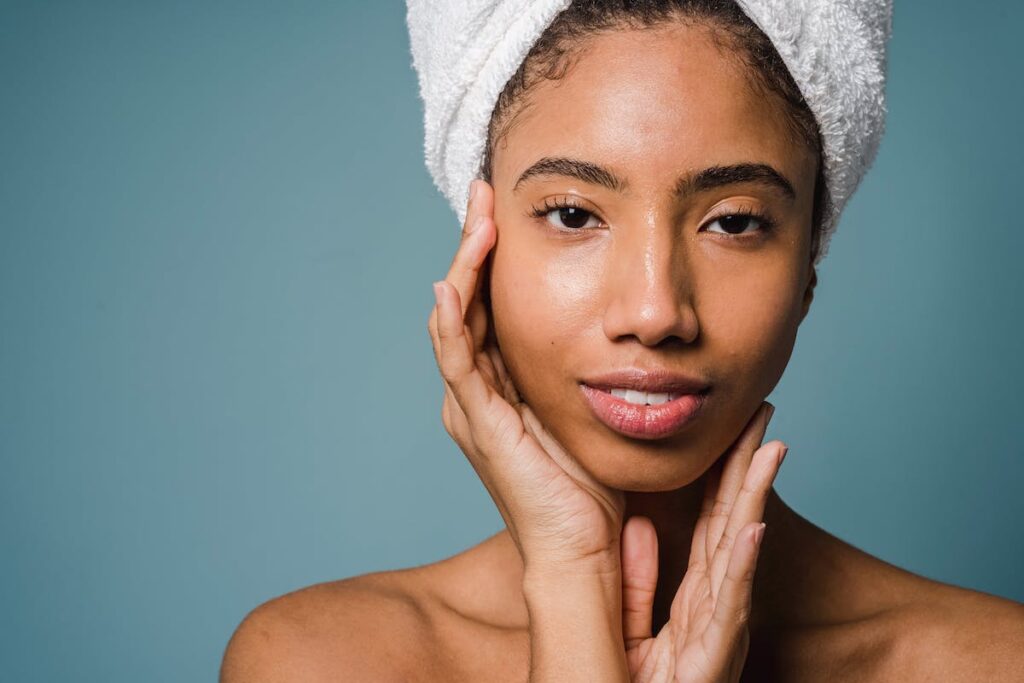
Taking care of your hair length with the right products
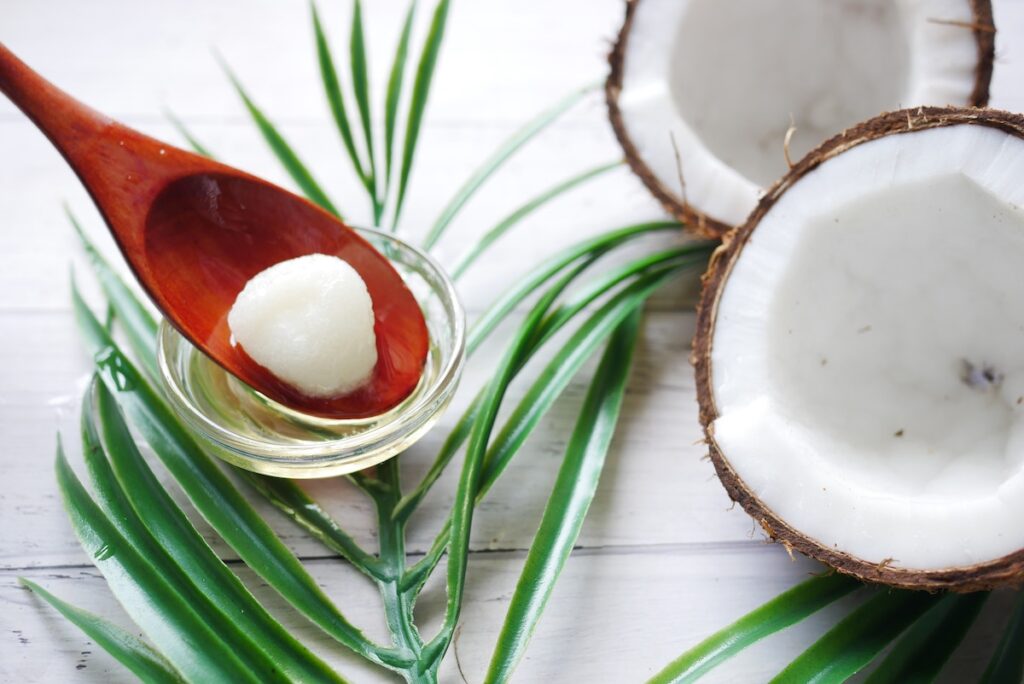
Coconut oil is a good source of moisture for deep skin care.
Your transitional hairstyles
Whatever transitional hairstyle you adopt, don't replace the ordeal of straightening with other equally trying torments, such as braids or weaves that are too tight at the base, extensions and additions that are too heavy.
If you pull too hard on your roots, you run the risk of detaching them from their hair follicles and of cause a premature fall. This hair loss would then artificially trigger a new life cycle for the hair in the process of succeeding the previous ones. This is not desirable! Eventually, your hair will grow back thinner and thinner, and its life span will be shorter and shorter. Eventually, the hair won't grow back at all, because you've exhausted its ability to renew itself. In medical terms, this is called hair loss due to traction.
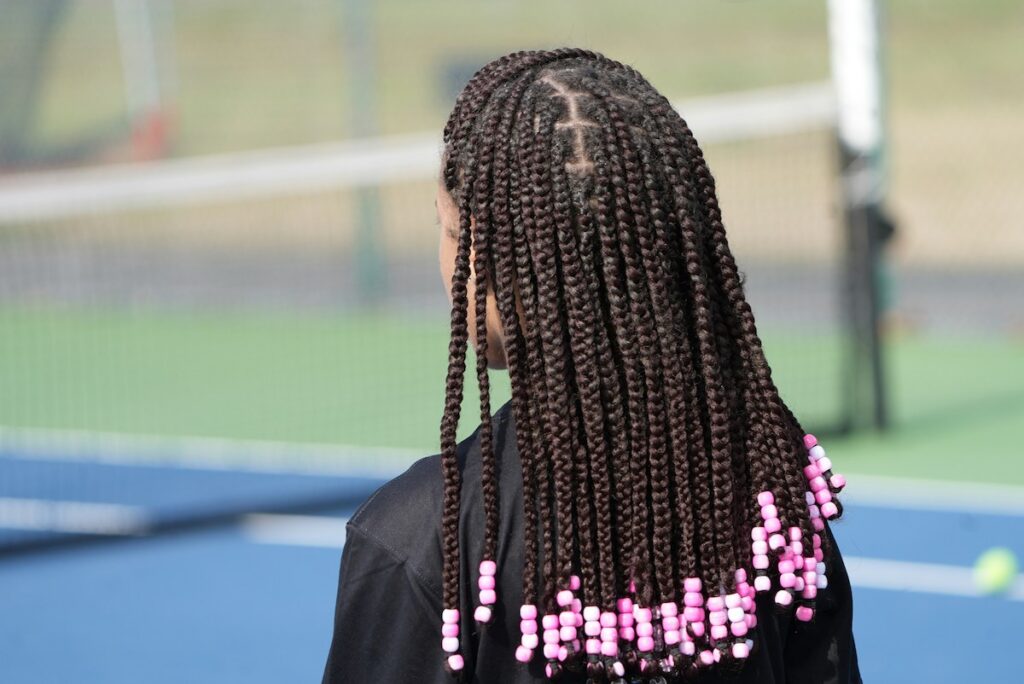
Transitional hairstyles: be careful!
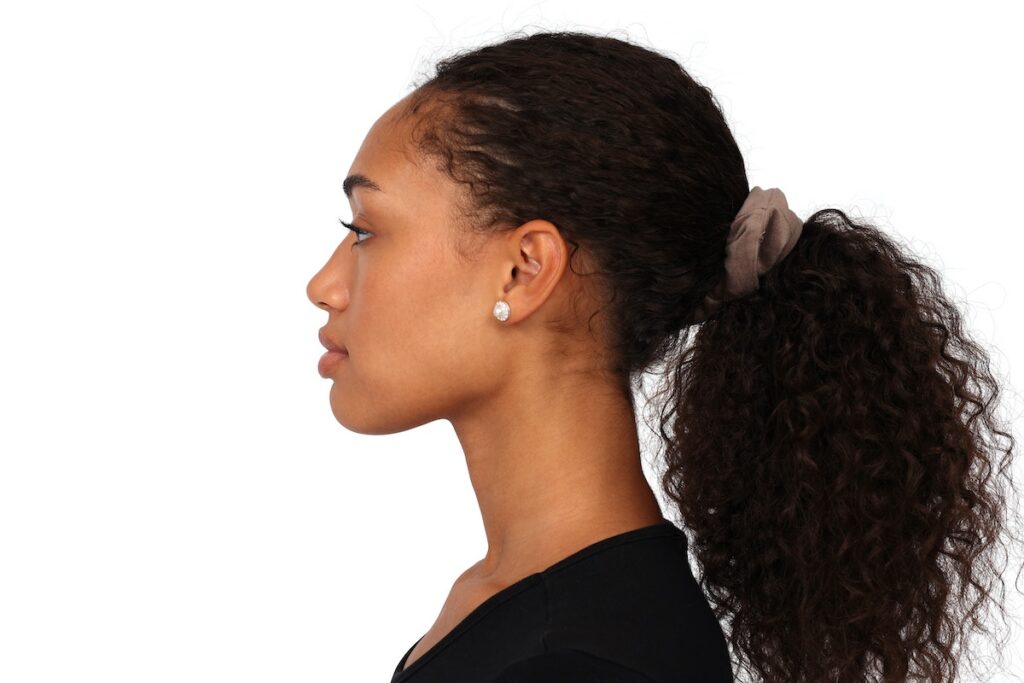
Traction alopecia
Keep moisturising and massaging your scalp as long as you keep your style. If you don't, your hair near the roots will become dehydrated when you undo your style and will be exposed to the risk of breakage.
We also advise you not to keep your hairstyle more than one month or 6 weeks maximum. It is never good for roots to be fixed for too long in one direction. They need to breathe and develop without constraint. In addition, when you undo your braids or remove your additions, proceed with the utmost delicacy. Check that your natural hair, close to the scalp, hasn't broken. If this is the case, don't re-do your hairstyle and leave your hair loose for a few months!
Your shampoo
This is an important moment, both in terms of the choice of shampoo itself and the dos and don'ts.
You've no doubt experienced it for yourself, the washing substances contained in shampoos, even good quality ones, damage your hair and often contribute to drying them out. At the Centre Clauderer, in our treatment protocols for frizzy hair, we recommend replacing the shampoo at least two times out of three with a natural 99 % conditioner. Although it does not contain detergents, this cream leaves hair very clean.
Tips for washing frizzy hair
To avoid damaging your hair when you wash it, here's the advice we've already given you for relaxed hair:
- Wet your head gradually using warm water at around 30-35°C, spread a small amount of shampoo over the scalp and lengths.
- Fingers flat, lightly rub your scalp, knead your hair gently, from the crown to the ends, to avoid tangling. The operation should take between 1 and 3 minutes, depending on how much hair you have. Above all, contrary to popular belief, don't massage your head vigorously while shampooing, as this can dry out your skin. Massages, so necessary for moisturising Afro scalps, should be carried out after shampooing, never during, using special nourishing milks (see Scalp care link above).k
- Gradually pour in the equivalent of one or two bowls of barely warm water on your hair, while continuing to gently massage it. This is to ensure that the shampoo is removed very gradually. Then rinse thoroughly. If your hair doesn't feel clean enough, you can repeat the operation once more. Otherwise, there's no point.
- For the last rinse, Add a teaspoon of apple vinegar to half a litre of spring water to eliminate limescale, which is particularly harmful to frizzy hair.
Detangling
If you've already cut the relaxed part, your natural hair doesn't need to be detangled every day. However, you shouldn't let it get tangled. into an inextricable ball. So what should you do? For everyday styling, use your fingers rather than a comb. For in-depth detangling, once again follow the same instructions we gave you for straightened hair: proceed strand by strand, holding a strand in one hand and a wide-toothed afro comb in the other. Always detangle from the bottom up, working your way gently up to the scalp.
Recipe Always dampen your hair before detangling. Preferably use a spray bottle and spring water, to which you'll add a little virgin oil and light conditioner (to make it easier to mix oil and water). Average proportions: 80% water, 10% oil, 10% cream. The amount of oil can be reduced or increased, depending on how your hair reacts. Note that if you decide to follow a Clauderer Treatment, one of your products will allow you to make this mixture.
Responding to the criticism of those around you
If you decide to let your hair grow naturally, you can expect to be subjected to the following risks strong pressure from those around you or your hairdresser. Here's how you can counter their arguments:
- Argument no. 1: Your hair will never be neat! Answer: if my hair is well cared for, it will be much cleaner than artificially straight, inert hair that breaks at every length and whose roots appear as early as the second month after straightening. With a clear head, I'll feel better about myself and the health and beauty of my hair will benefit. My new slogan: "Love yourself naturally, your hair will love you".
- Argument no. 2: Your hair won't grow! Answer: On the contrary, they will grow much better, because my scalp will no longer be under attack from the straightening products that prevent their regrowth from developing normally.
- Argument no. 3: Your hair will fall out! Answer: I know that throughout my transition, the straightened part will be very fragile and that I'll have to treat my two textures with special care. But why should the natural part fall out? On the contrary, I'm going to regain a beautiful density of hair.
- Argument no. 4: You're going to spend a fortune on additions and extensions! Answer: I spent a fortune trying to repair the damage that straightening caused to my hair. With my natural hair, all I have to do is moisturise and nourish it. My hair budget will go down.

